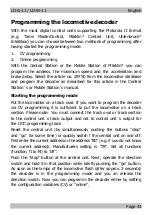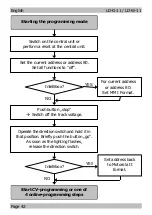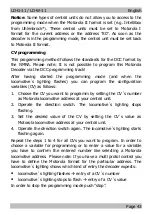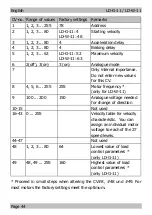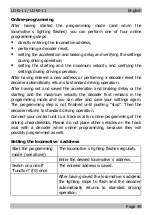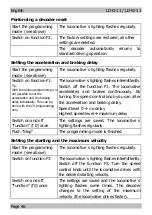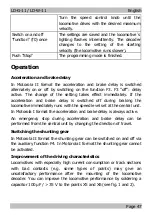
English
LD-G-11 / LD-W-11
Page 32
Operation overview
The decoder is designed for operation in Motorola II format and can be
adjusted to one of 255 addresses. It evaluates the digital data sent by the
central unit to its address. It controls the locomotive´s motor and the
driving characteristics. In addition, it switches the locomotive´s lighting.
In Motorola I format it is possible to operate the decoder, but the
programming of the parameters and the controlling of the functions is
restricted.
Automatic recognition of the analogue mode
The decoder can also be used in analogue model railway layouts run with
an A.C. speed control. When putting the locomotive on the rails the
decoder recognizes automatically if it is run in analogue or digital mode
and sets the corresponding operation mode. The automatic recognition of
the analogue mode can be switched off by programming the decoder
accordingly.
The decoder is not suitable for being operated in analogue model railway
layouts run with an D.C. speed control. The decoder evaluates the data
received in such layouts as "braking section", the locomotive therefore
does not run.
In analogue mode the decoder reacts to the analogue changing
direction signal. The lighting is always switched on according to the
direction of travel. Switching on or off the lighting and the additional
functions is not possible.
Driving of the motor
Both decoder types LD-G-11 and LD-W-11 are designed to optimally
control their particular motor types.
The locomotive decoder LD-G-11 drives the (D.C.) motor with a PWM of
32 kHz. This guarantees a soft and constant run of the motor, with
which the decoder can also be used with coreless (Faulhaber) motors.
The locomotive decoder LD-W-11 drives the (A.C.) motor with a PWM
of 300 Hz and thus is optimized to most motors of this type. The PWM

















